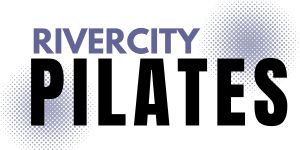The One Leg Kick exercise is another one of those Pilates exercises that seems pretty simple. You just lay on your belly propped up on you elbows (kind of like when you were a kid watching cartoons) and try to kick your butt with your foot right? If you find this exercise easy or maybe just “don’t get it”… try what I like to call Picky Pilates. Read through the following tips below and try to incorporate ALL of them as you coordinate your breath and movement to practice!
- Getting set up The start position of this exercise should feel like work! If it’s not then there is no use even starting to add the movement in! Take your elbows out in front of your elbows, slight press your fists into the mat and find the feeling of gently pulling yourself through your arms (I always think of someone doing an army crawl, pulling themselves forward). Your legs should be gently squeezing together and stretching away from your hips so much that maybe your toes and even knees are starting to lift away from the floor. If actually having your feet and knees lift slightly doesn’t feel good on your back you don’t need to lift them but try to find the feeling of reaching through them so much they could lift off! Your abdominal muscles should be working like crazy in this position pulling away from the floor and helping you find a position that feels stable and supported ( ie your low back does not hurt!)
- Practice holding the position first. The start position of this exercise is really a lot of work so feel free to just work on finding it and holding it as you breathe as a prep for the full exercise!
- When you’re ready to add in the movement here’s what you’ll do: Keeping the non-moving leg reaching and still, the other leg will do a snap-kick (a quick double kick) toward you buttocks. During this snap-kick the work of the exercise is to not change your body position AT ALL. You can do this by gently pressing your thighs and hips toward the floor to stabilize. This snap-kick while stabilizing will work your hamstring and glute muscles( butt and back of the legs) and give you a stretch in your front thigh muscles.
- Breathe and Repetitions: Eventually you can work towards 6 to 8 repetitions on each leg. You can inhale as you snap-kick one leg and then exhale as you snap-kick the other.
